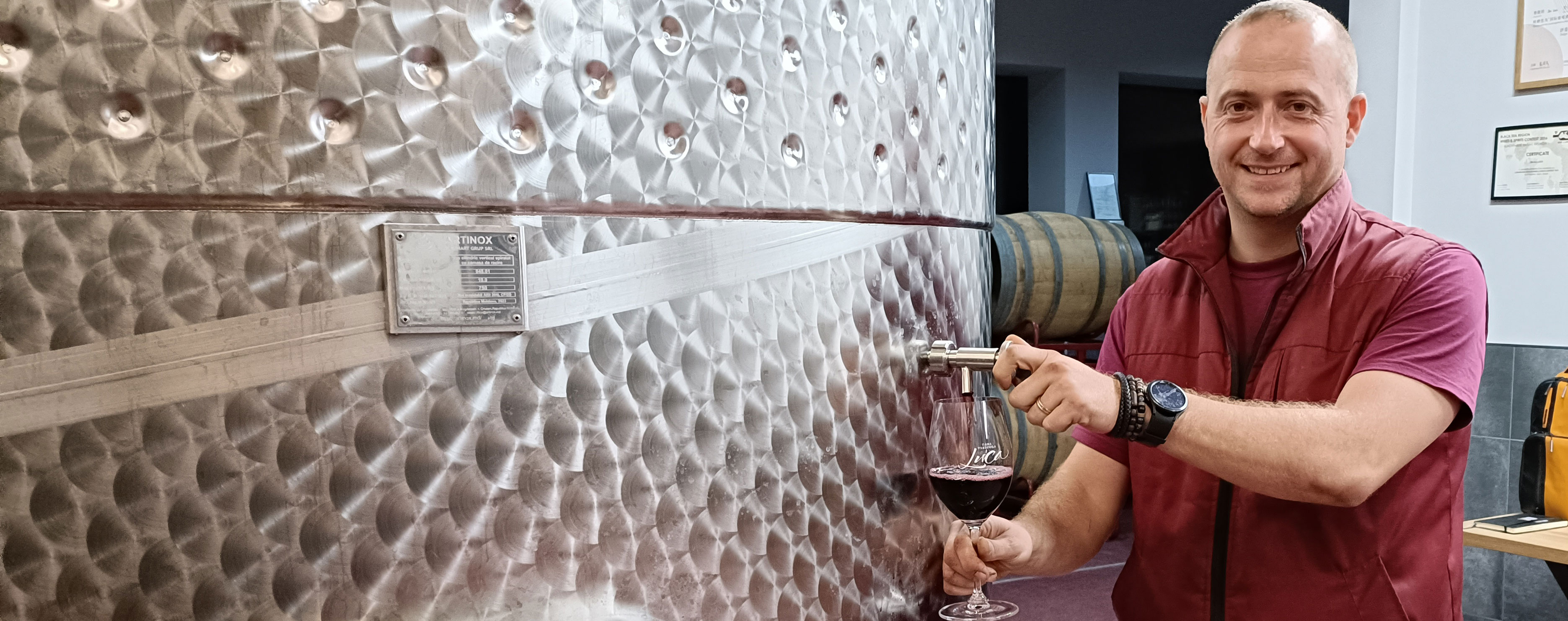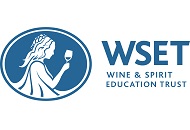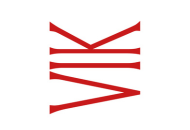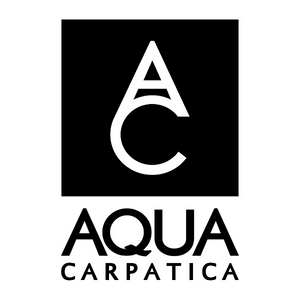
It was a great introduction to this unusual wine country. It’s small but it has the highest density of vineyards in the world (covering 3.8% of its territory and 7% of its arable land), and the longest cellars in the world – with Cricova winery clocking up 120km of limestone tunnels while the 55km-long underground caves under the Milestii Mici winery hold 1,500,000 bottles of wine.
I was on my way from Romania to Ukraine and decided to spend a couple of days here. There is a new wave of winemakers who are doing exciting things with red grape varieties such as Fetească Neagră, Saperavi and Rara Neagră and white grape varieties like Fetească Alba, Fetească Regala and the hybrid Viorica. One of the winemakers I met, Ion Luca, called them the Fetească Generation: artisanal wineries focused on indigenous and regional grapes in varietal wines or blended with the international varieties that were planted throughout the country because “people in Moscow (while Moldova was part of the Soviet Union, 1944-1991) really knew better than us what varieties we should grow,” he says sarcastically. “Of course, they were interested only in quantity; this is why Moldova is full of vineyards of Cabernet, Merlot, Chardonnay, Aligote. We have the biggest surface of Aligote in the world (14,000ha).”
The new wave of winemakers has replanted their vineyards with indigenous varieties. “But the problem is that we never learned what to do with these indigenous varieties,” Ion continues, “so now we are experimenting every vintage: what else can we do or how different will be this Feteascâ Regalâ be if we ferment it 2°C lower? This knowledge is not there yet, and our task is to somehow come to this knowledge, document it and have it prepared for the next generation. This is why many people call our generation the Feteascâ Generation. This was the generation that started doing wines after the Russian embargo of 2006 (one of three embargoes in recent years aimed at punishing Moldova).”
Ion adds: “I’m still experimenting, I’m still changing things every year.”
All of which makes it an exciting place to visit for inspiration…
A lesson in label design

First stop is the new boutique winery, Casa Vinicola Luca (above). It has a tall ceiling and stacked tanks, making the most of the space and the potential to grow this business, which Ion Luca started in 2011.
He greets me with a glass of classic-method sparkling wine, Casa Vinicola Luca Brut Natur, the first zero-dosage brut from Moldova. It’s a blend of Chardonnay, Pinot Noir and Feteascâ Regala.
Our meeting is in the evening because he’s in the middle of the 2023 harvest. But there are no grapes in the winery, no seeds on the floor, no presses churning, no pumps whirring. No odours of must or marc. No plop of bubbles from ongoing fermentations.
Ion explains that the shiny new winery, which has been eight years in the making, wasn’t quite ready to receive his 10kg crates of grapes. The grapes are being vinified once more at the vocational college that Ion helped to set up with funding from Austria.
Ion owns two brands, 2ha of vines and buys grapes from owners of another 8ha. Annual production is about 100,000 bottles. Like the rest of the new generation of wineries, Ion is focused on exports, with South Korea, Japan and Romania his top markets.
“It’s not an easy task,” he reflects. “The main problem is not in growing the grapes or producing some decent quality wines, it’s selling them. That’s where many families just quit because it’s not an easy task. It’s not an easy task locally but it’s an even more difficult task externally because when you export your wines there are other challenges that you have to face and the biggest one is Moldo-what? Is there a country like that and do they produce wines? Let’s be honest, Moldova is not the star of wine-producing countries, but we are working for ten years now to promote the brand Wine of Moldova, but it will probably take 50 years, so it’s still a very difficult job and we don’t have the local market because everyone is doing wine in Moldova.”
He also says the local market doesn’t drink bottled wine. It’s why Moldova exports about 85% of the 1.3m/hl it produces each year. Romania, Poland, Czech Republic, China, Canada, Ukraine, and Turkey are its top export markets.
Casa Vinicola Luca, Ion’s new brand, produces certified-organic wines. His original brand, Carpe Diem, offers his more traditional lineup of wines. To get this brand off the ground, the then president of the Union of Small Wine Producers in Moldova opened a wine shop in the capital, Chisinau, in 2011. It’s called Carpe Diem Wine Shop & Bar and its run by Ion’s wife, Nata, allowing Ion to concentrate on wine production. Wanting to focus on the winemaking is another reason he likes to source his grapes from growers, he says.
Ten years on from his first vintage, he explains: “Our long-term plan is to have two different product lines. Carpe Diem conventional and Casa Vinicola Luca will be all our organically certified wines. We are already in the process of conversion, but this is the long-term project to have everything that comes as Casa Vinicola Luca as organically certified.”

The thing that catches my eye at the new winery are the distinctive labels.
“This really helps me sell my wine,” Ion admits, adding: “This is where my wine shop helps me. Because, in 2014, when I had my first vintage ready to be bottled (2013), I was thinking, okay, now I need a label. I knew that I wanted my wine to be called Carpe Diem. So, I went the classical route – I went to a company that specialised in labels, you tell them everything you want, and then after a couple of weeks they bring you a big album: ‘this is concept number one, this is number two…’ So you have to choose one of them. I saw 20 concepts from four different companies and I didn’t like any of them. I said, ‘This is not Carpe Diem, this is not representing what I told you one month ago’. But this process took about half a year and I spent quite a lot of money. After seeing 20 concepts I was so desperate because of two things: I’m already half a year late bringing my wines to the market, and this is the year when I will finally launch my Carpe Diem wines but I am also out of ideas.
“Being very frustrated, one day I was in an airport in Bucharest and I was looking again at the wines in the duty free shop, but also the wines in my wine shop every day in front of me, and I wanted to do something different. I really wanted to stand out. I wanted something that was eye-catching, was Carpe Diem and is bringing a message of happiness, a message of joy. That’s difficult to do with the classical wine label.
‘I wanted something that was eye-catching’“And I saw some Romanian wines with faces, but they were all sad. Beautiful pictures, beautiful people, very expressive, but sad. And I became instantly also sad. Why would you do that, why would you want people to look at your wine and become, in one second, sad? And that was the moment I said, ‘Wait a minute. What if we do it the same but with happy people?’ I came home, it was late at night, I downloaded 10 photos of faces from Shutterstock and sent them to one of the designers, asking them to make this photo the central element of ‘concept number 4’. It took them a couple of hours to put the label design together.
“These happy people are something that everybody will understand – in China, in Canada, where I sell my wines. This is the happiness that everyone will understand.
“Ten years now with this label and I’m still happy with it.”
Some of those original images bought from Shutterstock are still in the range. But for new wines, Ion commissions photos of friends or friends of friends. Viorica is a friend called Viorica. Viorica – an aromatic white grape variety created in Moldova from red grapes Seibel 13-666 and Italy's Aleatico – is his bestselling wine in Japan. The Muscat-like aromas are more subdued than in most examples in Moldova. “I’m trying to hide the aromatics,” Ion tells me. “I don’t want it to be an aroma bomb like many Moscatos. I try to concentrate on the body and texture, but it’s getting more and more important for us. Today, I cannot produce enough Viorica because my Japanese partner buys everything I produce (3,700 bottles).”
Going back to the other labels, Ion tells me: “It works in ways that I didn’t even plan because, in 2019, I was selling almost a half of my red wines in China. They don’t know what Carpe Diem is but they understand this face. If they like the wine they will find it easily the next time, they will remember the face.
“This really helps me sell my wine. On the shelf, when you have thousands of wines, they stand out.”

The white wines like Viorica, Fetească Albă and Fetească Regală are made “as fresh as possible, as quick as possible”. He stopped fermenting his whites in oak a few years ago. He believes this is the style his customers want. “But, for sure, indigenous varieties.”
His red wines are also made using standard techniques: fermented in tanks with some aged in French oak barriques. His bestselling Bad Boys is a blend of 45% Fetească Neagră, 45% Saperavi, 5% Cabernet Sauvignon and 5% Merlot, matured for 20 months in French barriques.
All the wines are fermented with selected yeasts because he exports his wines long distances to countries such as Japan, China and South Korea. However, the main reason for using selected yeasts is “because this gives me the opportunity to concentrate on other experiments. Because certain things I have to do the same every year to see if the experiment that I’m doing has an impact or not, which is why my philosophy with white wines is 100% stainless-steel, selected yeasts, low temperature during fermentation (14-15°C for some varieties), and then three or four months and the wine should be on the market to have the expression of the fruit, the expression of the variety still very strong.
“I’m a true believer that the hundreds of years of development and science made our wines better. I’m a big fan of Georgian wines but I think our wines are better because we cherish the traditions and thousands of years of winemaking but I’m also a big fan of the research and development and science and there is indeed a reason why selected yeasts make my wine better than the natural yeasts.”
Fetească Neagră in white

A month before his typical harvest for red grapes, Dan Prisacaru picks some Fetească Neagră from the Criuleni region and Cabernet Sauvignon from the warmer Valul lui Traian region. This is for his white wine.
Dan (above), the owner of Minis Terrios, handpicks the Fetească Neagră first into 6.5kg crates and keeps them in cold storage at 0°C “because if it’s not cold, you’re going to get colour extraction really fast. Then we harvest the Cabernet Sauvignon three or four days later. After it’s chilled, then we have to be really fast.”
The two red varieties are crushed and destemmed and put in the press together.
Dan, who studied winemaking in Burgundy and started Minis Terrios with his wife Diana in 2013, explains to me that he makes a white from these two red varieties “because rosés aren’t popular in Moldova, so I thought to make a blanc de noir. It’s 85% Cabernet Sauvignon, 15% Fetească Neagră. I would like to use a little more Fetească Neagră, however it’s thin-skinned so you get the colour extraction right away. Cabernet Sauvignon is thick-skinned, so the extraction doesn’t go really fast. We do the bleeding method, what the French call méthode saignée, so we just let the free juice run because if we press, we’ll get more colour concentration.
“We ferment the rest for a red wine, and we use that to correct other red blends. The summers get really hot in Moldova, so you get the sugar levels skyrocketing and when you do a wine that’s like 15% alcohol, we use a little bit of this to correct the acidity and alcohol levels.”
He also inoculates because, he explains, “I’m still a young winemaker without much experience – so I use commercials yeasts. I tried once to use natural yeasts, but the fermentation stopped.”
Wines with strong messages

Crimea, Donbas, Transnistria, Abkhazia, and South Ossetia were on Chateau Purcari’s mind when it launched its Freedom Blend in 2014, with grapes from the 2011 vintage marking the 20th anniversary of the country’s independence from Russia. But it took on even more significance in 2014 when Russia invaded Crimea . So, at the launch, Purcari called the red blend “a cry to the world against a pattern of military aggression”.
The wine combines regional grape varieties representing countries affected by Russian aggression: Bastardo, the Portuguese grape that thrived in Ukraine’s Crimea, Rara Neagră from Moldova and Saperavi from Georgia, all varieties that happened to be grown at Chateau Purcari, in the region of Ștefan Vodă, near the border with Ukraine.
Purcari, which took in refugees from Ukraine as soon as they flooded across the border at the start of the current war, says the Saperavi-dominant blend is “a tribute to the people of these three countries that do not take their freedom for granted”.
Another wine with an interesting backstory is Maluri de Prut – a blend of Rară Neagră and Fetească Neagră. The two local varieties represent different sides of the Prut River – which now separates Moldova and Romania. Moldova and Romania were part of the same country until Russia split them. However, to a large extent, both countries share the same history, values and culture – and this wine ‘bridges the divide’ by combining a tricky grape that’s indigenous to Moldova with one that’s indigenous to Romania.
The other wines that caught my attention here, in an idyllic spot between the Nistru River and Black Sea, were from the limited-edition Academia line, which marks the company’s move into premium wines that explore the identity and character of Rara Neagră, Fetească Neagră, and Saperavi, which seems to grow exceptionally well in Moldova.
The wines, sold in artisan-like bottles, are obtained from hand-harvested grapes that are cooled (24hr at -2°C) and destemmed, without crushing. The whole berries go into 16hl amphorae from Tava for a spontaneous fermentation. After the 10-day fermentation, the wine is kept on skins for about a month to complete MLF and “create a more complex, stable and long-lasting wine”. The wine is then racked off skins into clean amphorae for two years’ ageing.
4632 bottles of Rara Neagră are made – the number representing Purcari’s location on the world map. 6123 bottles of Fetească Neagră are produced – the number symbolising harmony: 6 being the perfect number from a mathematical point of view, being the sum of 1+2+3. 6000 bottles of the Saperavi are made – representing the number of years that amphorae have been used in winemaking.

 English
English French
French



.png)


.png)





